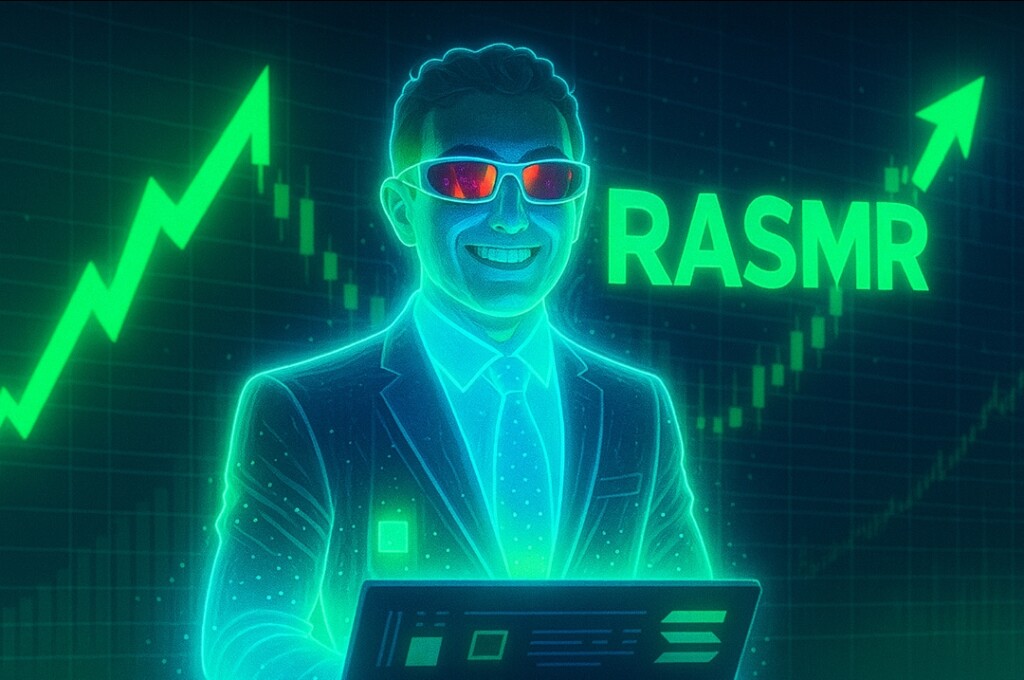Tokens of the meme variety are often accompanied by exuberant swings in price, parabolic trajectories, and community hysteria.
But if you look beneath the surface of some of these truly explosive charts, you might just find that there’s a little something behind them called tokenomics. They can promote some virality while disguising the fragility of what’s beneath the surface.
The Illusion of Value: A Closer Look at $RASMR’s Launch
At a glance, $RASMR appears to be thriving. Token boasts a $9.2 million market cap, 2,753 holders, and a WSOL liquidity pool showing over $167,000.
To the untrained eye, it’s a promising entry point—stable liquidity, growing community, and upward price momentum.
But beneath this polished surface lies a clever trap driven by locked tokens and misleading metrics.
The source material maintains its structure and formatting without changes. $RASMR was launched via Pump.fun, a popular meme token launchpad. The deployer minted 1 billion tokens and at first only spent 84 SOL (around $12.4K) to get hold of 791 million $RASMR tokens off the bonding curve. This act alone inflated the token price and fully diluted market cap (FDV), giving off a feel of explosive value. There’s just one problem with this apparent huge rise in price and value: it’s mostly artificial.
Using the following methods, liquidity was added after the bonding curve buy-up.
- $RASMOL: 206.9 million
- WSOL: 84.99 (~$12.5K)
This set a price of roughly $0.0086 per token, assigning the project a misleading FDV of $8.6 million—most tokens were not reachable or capable of being traded, after all.
Locked Supply: The Engine Behind the Fake Scarcity
Now, speed ahead, and the pool unmistakably shows:
- Only 18 million RASMR left
- More than 158K in WSOL
This appearance of a healthy setup is at best misleading. Over 791 million of the nearly 800 million tokens supposedly on the market can’t be sold or transferred, because they’re in wallets tied to the token’s deployer. Those tokens are used to inflate the token’s market cap and FDV, and otherwise do nothing. They serve no role in the market.
🚨 $rasmr looks like an $10.4M market cap gem…
but here’s what’s hidden beneath:
– 98% of tokens are locked
– Only few tokens are tradeable, so price is high.
– LP holds $157K in WSOL and mostly from buyers, not true liquidityIf unlocks hit the pool:
→ Price crashes
→… pic.twitter.com/ou2fu99R8r— Stalkchain (@StalkHQ) June 17, 2025
This majority that is locked in place is not the result of happenstance; it is the result of a design choice made by the architects of the Constitution. And they had good reasons for it, as we will see shortly.
- Generate an illusion of scarcity and pumped-up token perception
- Lure in FOMO purchasers watching the price rise rapidly owing to a limited float
- Appear to construct a robust WSOL-backed liquidity pool
- Offload tokens into the pool at high valuations, while making the price look stable—until a sudden market-reaction event occurs
A chart that moonshots quickly is the result, which draws in buyers chasing green candles, who are unaware that the true circulating market cap is only a fraction of what it seems to be.
Actual real market capitalization:
$0.0086 × 18M tokens = $155,000
This is a long way from the impressive headline number of $9 million.
The Trapdoor Effect: How Late Buyers Get Burned
A trapdoor scenario is set up by a unique trifecta: a small supply of tokens that can trade, a bonding curve that encourages inflating buy prices, and locked tokens that do not trade. When you add to that the appearance of a robust bullish movement with robust liquidity—an illusion created by listing on decentralized exchanges and by new buyers whom the curve is luring in—it is evident that this is a well-engineered pump.
Yet the moment unlocks commence and the 791 million trapped tokens are unleashed into circulation, the dynamics are altered dramatically:
- Instant pressure on price from token supply exploding
- Sellers rush to cash out; WSOL in LP drained rapidly
- Price collapses; confidence evaporates; no recovery in sight
It’s a classic case of “first in, first out”—where only the earliest participants profit, and the rest are left with heavy losses once reality sets in.
Conclusion: The $RASMR Cautionary Tale
The first meme token to create a hype-fueled illusion using locked tokens and bonding curve economics was not $RASMR, and it certainly won’t be the last. For would-be investors, the main lesson here is this: always look past FDV and superficial liquidity. Consider the circulating supply, investigate wallet distribution, and get a handle on just where the liquidity is really coming from.
For $RASMR, the game was set up to be played in just the way it was played—maximize hype, minimize the float you can trade in, and get out before the trapdoor opens. Like many viral tokens, it might look on the chart like a moonshot. But when you zoom in, it’s often just smoke and mirrors and timing.
Engage in intelligent trading. Maintain an awareness of the latest developments in the field. Avoid the trap of self-delusion.
Disclosure: This is not trading or investment advice. Always do your research before buying any cryptocurrency or investing in any services.


No Comments